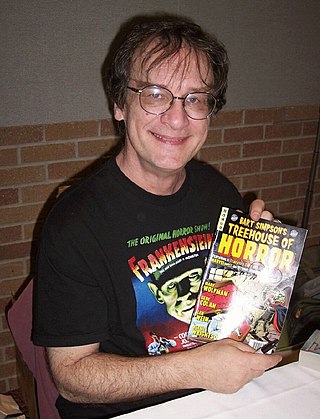
Bernard Albert Wrightson was an American artist, known for co-creating the Swamp Thing, his adaptation of the novel Frankenstein illustration work, and for his other horror comics and illustrations, which feature his trademark intricate pen and brushwork.

Klaus Janson is a German-born American comics artist, working regularly for Marvel Comics and DC Comics and sporadically for independent companies. While he is best known as an inker, Janson has frequently worked as a penciller and colorist.
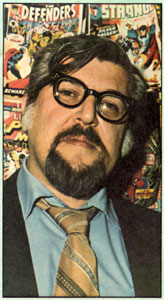
John Buscema was an American comic book artist and one of the mainstays of Marvel Comics during its 1960s and 1970s ascendancy into an industry leader and its subsequent expansion to a major pop-culture conglomerate. His younger brother Sal Buscema is also a comic book artist.

Vampire Tales was an American black-and-white horror comics magazine published by Magazine Management, a corporate sibling of Marvel Comics. The series ran 11 issues and one annual publication from 1973 to 1975, and featuring vampires as both protagonists and antagonists.
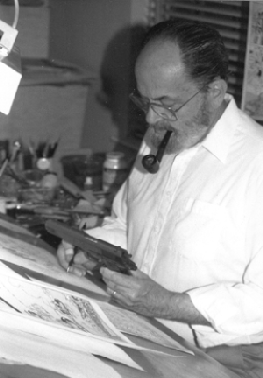
John Powers Severin was an American comics artist noted for his distinctive work with EC Comics, primarily on the war comics Two-Fisted Tales and Frontline Combat; for Marvel Comics, especially its war and Western comics; and for his 45-year stint with the satiric magazine Cracked. He was one of the founding cartoonists of Mad in 1952.
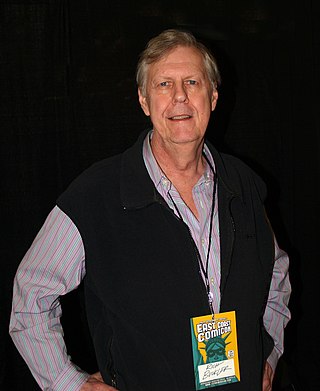
Rich Buckler was an American comics artist and penciller, best known for his work on Marvel Comics' Fantastic Four in the mid-1970s and for creating the character Deathlok in Astonishing Tales #25. Buckler drew virtually every major character at Marvel and DC, often as a cover artist.

Ernesto Chan, born and sometimes credited as Ernie Chua, was a Filipino-American comics artist, known for work published by Marvel Comics and DC Comics, including many Marvel issues of series featuring Conan the Barbarian. Chan also had a long tenure on Batman and Detective Comics. Other than his work on Batman, Chan primarily focused on non-superhero characters, staying mostly in the genres of horror, war, and sword and sorcery.
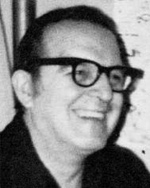
Charles Eber "Chic" Stone was an American comic book artist best known as one of Jack Kirby's Silver Age inkers, including his landmark run of Fantastic Four.
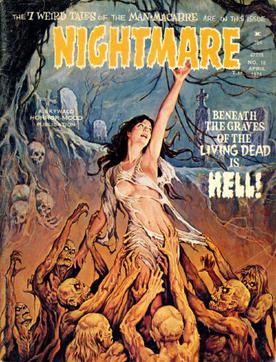
Skywald Publications was an American publisher of black-and-white comics magazines, primarily the horror anthologies Nightmare, Psycho, and Scream. It also published a small line of comic books and other genre magazines. Skywald's original comics were similar in appearance and quality to rival black-and-white publisher Warren Publishing, and even employed many of the same creators. Skywald operated from 1970 to 1975.

Savage Tales is the title of three American comics series. Two were black-and-white comics-magazine anthologies published by Marvel Comics, and the other a color comic book anthology published by Dynamite Entertainment.

Tales of the Zombie was an American black-and-white horror comics magazine published by Magazine Management, a corporate sibling of Marvel Comics. The series ran 10 issues and one Super Annual from 1973 to 1975, many featuring stories of the Zombie by writer Steve Gerber and artist Pablo Marcos.

Bob McLeod is an American comics artist best known for co-creating the New Mutants with writer Chris Claremont.

Conan the Barbarian by Robert E. Howard was first adapted into comics in 1952 in Mexico. Marvel Comics began publishing Conan comics with the series Conan the Barbarian in 1970. Dark Horse Comics published Conan from 2003 to 2018, when the rights were reacquired by Marvel Comics. Marvel published Conan comics until 2022, when Titan Comics took over the license to begin publishing its own series.
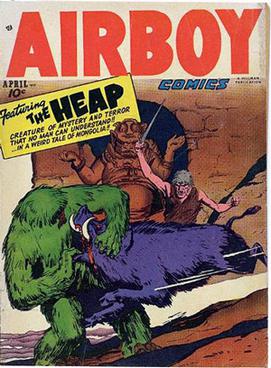
The Heap is the name of several fictional comic book muck-monsters, the original of which first appeared in Hillman Periodicals' Air Fighters Comics #3, during the period fans and historians call the Golden Age of Comic Books. The Heap was comics' first swamp monster.

Alfredo P. Alcala was a Filipino comics artist, born in Talisay, Negros Occidental in the Philippines. Alcala was an established illustrator whose works appeared in the Alcala Komix Magazine. His 1963 creation Voltar introduced him to an international audience, particularly in the United States. Alcala garnered awards in science fiction during the early part of the 1970s.
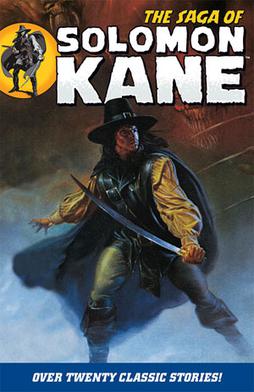
Solomon Kane is a fictional character featured in several comics published by Marvel Comics between 1973 and 1994. He was originally created by the pulp-era writer Robert E. Howard. Dark Horse Comics began publishing a new series of Kane stories in 2008, and also published collections of the 1970s Marvel stories in 2009.

The Savage Sword of Conan is a black-and-white magazine-format comic book series published beginning in 1974 by Curtis Magazines, an imprint of American company Marvel Comics, and then later by Marvel itself. Savage Sword of Conan starred Robert E. Howard's most famous creation, Conan the Barbarian, and has the distinction of being the longest-surviving title of the short-lived Curtis imprint.

Dave Simons was an American comic book artist known for his work on Conan, Ghost Rider, Red Sonja, and Spider-Man for Marvel Comics and Forgotten Realms for DC Comics. He is also known for commercial storyboard and games artwork work on The Secret Files of the Spy Dogs and Greyhawk Ruins.

Rodolfo D. Nebres is a Filipino comics artist who has worked mostly as an inker in the American comic book industry. Known for his lush, detailed inklines, Nebres' most prolific period was in the late 1970s and the 1980s.




















